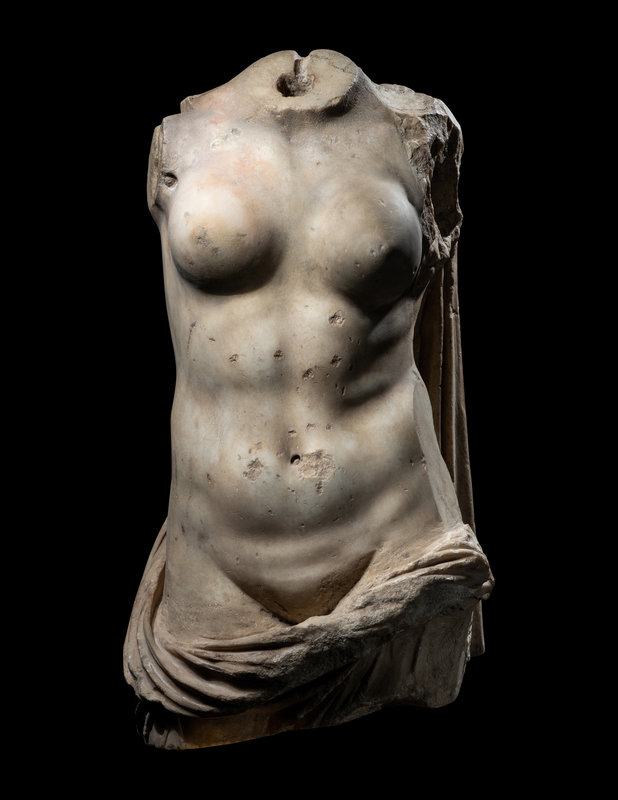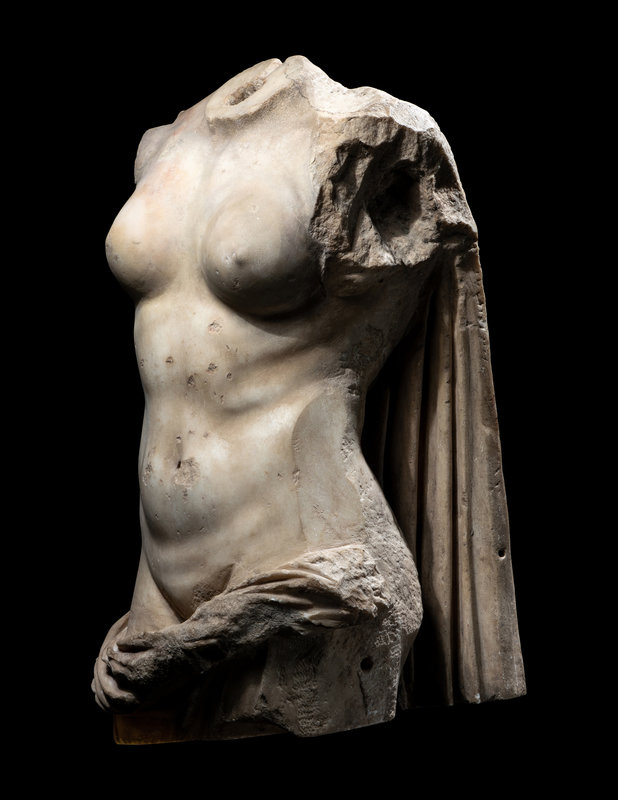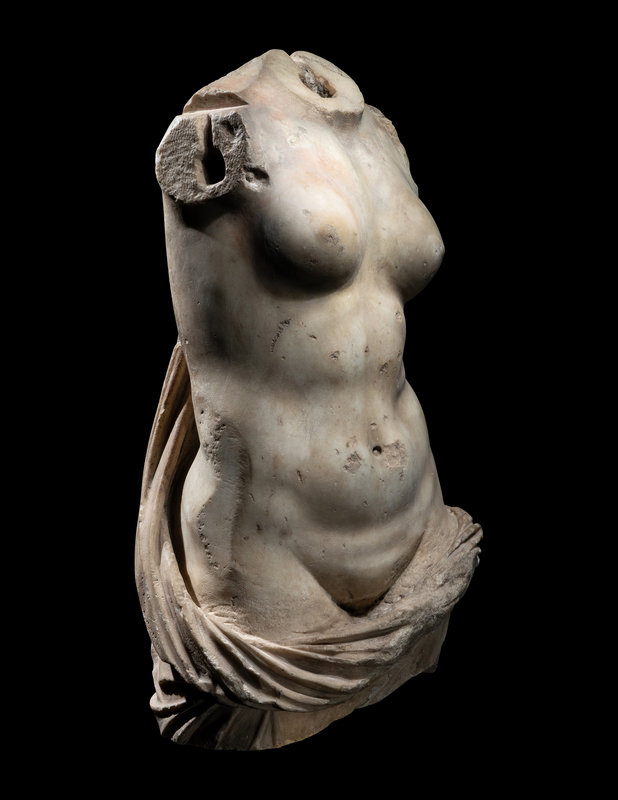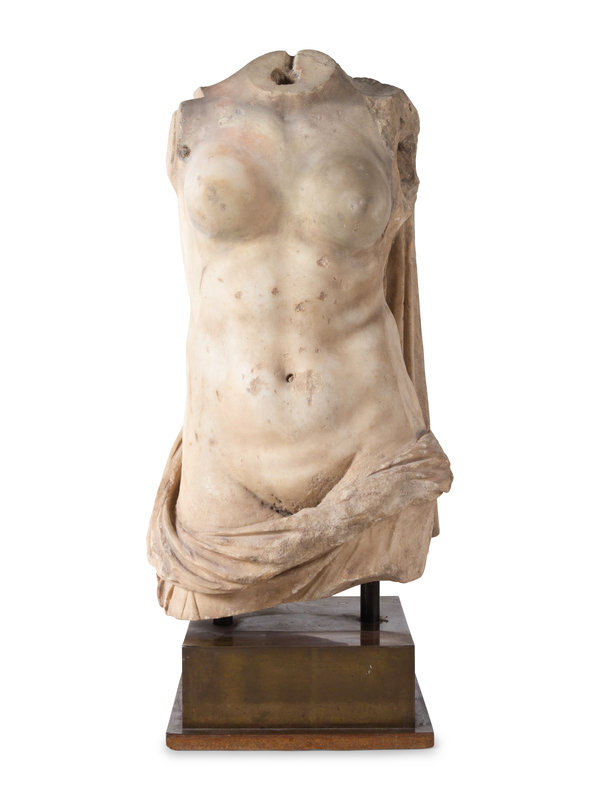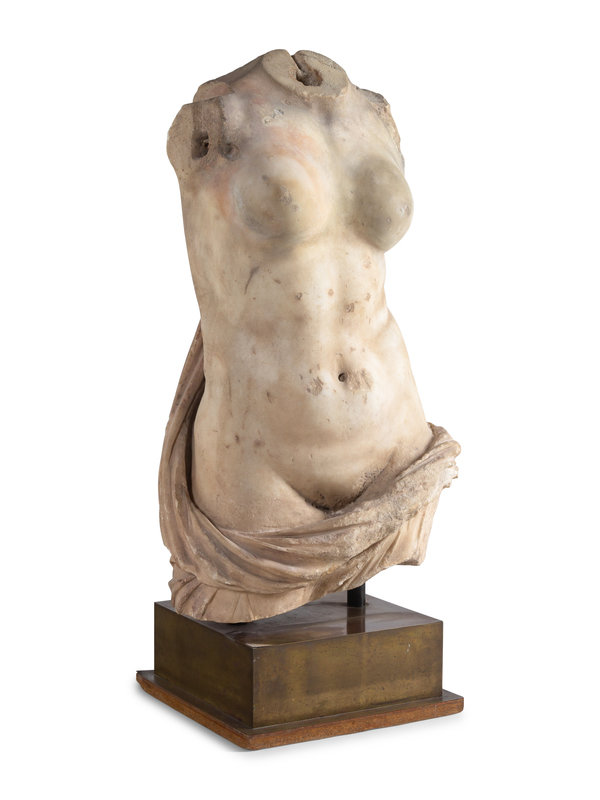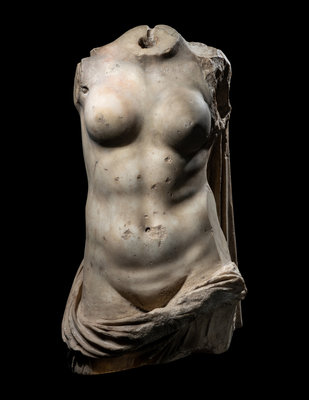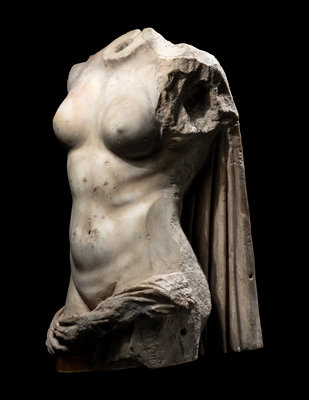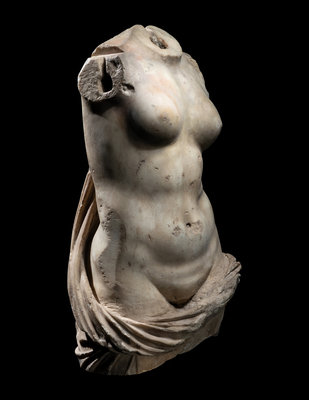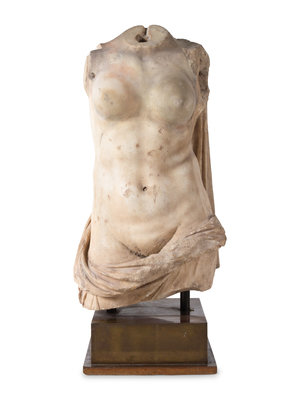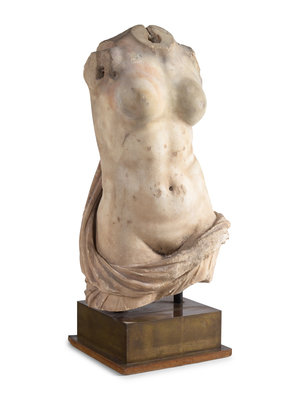Provenance:
Harold and Mary Moore, New Jersey; thence by descent to Dr. Harold F. Moore (1947-2015), New York.
Acquired by the current owner from the above in 1983.
Venus, the goddess of sensual love, had another essential function harkening back to her peculiar mythological origins: in the primordial world described by Hesiod, Venus’ Greek precursor Aphrodite was born from the foam created when Ouranos’ severed genitals were cast into the sea. In both Greek and Roman traditions, she maintained a strong maritime connection as one of the patron deities of seafaring and navigation, frequently shown emerging (gorgeously nude) from the sea and worshipped widely by grateful sailors.
Here, the goddess is shown in a format traditionally used in this connection with seafaring, worshipped as Aphrodite-Venus ‘Pontia’ (of the open sea) and ‘Euploia’ (good sailing). She stands with one hip hiked upwards, giving a sinuous line to the preserved nude torso. A thick mantle cascades down her back from one shoulder, gathered around the upper thighs, so the sensuous curves are proudly displayed and modestly covered. Representations of the goddess in this mode abound in a variety of media and sizes, often with accoutrements linked with the sea such as dolphins, steering oars, or rocky cliffs.
The rear of this statue was only summarily worked in antiquity, particularly at the proper left where chisel marks were left visible in the descending drapery of the cloak, indicating that it was likely intended for display in a niche. While it is unclear whether the oblong rectangular cutting at the back is ancient, it might indicate that the torso was attached to a larger sculptural composition. The same is true for the smaller dowel holes at the hip and drapery edge to the left, where one could envision a separately pieced attachment or support with a maritime theme.
